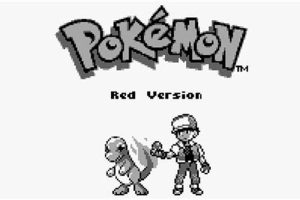The initial entries in the Pokmon franchise, released on the Game Boy, presented two distinct versions. These versions, while sharing a core gameplay experience, featured deliberate variations in available creatures and minor alterations to the in-game narrative and character interactions. This strategy encouraged trading and collaboration among players, fostering a sense of community and extending the lifespan of the games. For example, certain Pokmon, like Growlithe, were exclusively found in one version, necessitating interaction with someone owning the other version to complete the Pokdex.
This duality served several key purposes. It acted as a built-in method of scarcity, driving demand for both versions. Furthermore, the subtle nuances between the releases enhanced replayability for dedicated players seeking a comprehensive experience. Historically, this approach established a template that subsequent Pokmon iterations have consistently employed, cementing its significance within the series’ identity and commercial success.
The following sections will delve into the specifics of these alterations, covering the varied selection of obtainable Pokmon, unique glitches and design choices, and the overall impact these distinctions had on the initial Pokmon gaming landscape.
Strategic Insights into Version Exclusivity
Navigating the world of the original Pokmon releases necessitates a strategic approach, given the deliberately implemented distinctions between each version. Awareness of these differences provides a considerable advantage.
Tip 1: Prioritize Version Selection. Research exclusive Pokmon obtainable within each version prior to commencing the game. Identify which edition offers a greater concentration of creatures aligned with preferred battle strategies or personal collection goals.
Tip 2: Exploit Trading Mechanics. Master the in-game trading system. Recognize that obtaining all Pokmon requires consistent interaction with players owning the counterpart version. Understand the value of coveted creatures to secure favorable exchanges.
Tip 3: Leverage Version-Specific Glitches. Familiarize oneself with glitches unique to each version. Certain unintended mechanics can be exploited to facilitate faster progression, acquire rare items, or obtain otherwise unobtainable Pokmon. Proceed with caution as glitches can potentially corrupt save data.
Tip 4: Understand Move Set Variations. Acknowledge that move sets for identical Pokmon may differ slightly between versions. This nuance can impact battle effectiveness and should be considered when constructing a team.
Tip 5: Document Progress Meticulously. Maintain a comprehensive record of obtained Pokmon, items, and key story milestones for each version. This practice streamlines the completion of the Pokdex and the identification of missing elements.
Tip 6: Analyze Enemy Team Compositions. Note variations in opponent team compositions between versions. Adapt battle strategies accordingly to counter version-exclusive threats encountered during the gameplay.
Tip 7: Consider Cartridge Condition. Be aware that aging Game Boy cartridges are prone to save data corruption. Back up save files whenever possible to mitigate the risk of losing progress due to hardware malfunctions.
The implementation of these considerations will substantially enhance the playing experience, allowing for a more efficient and rewarding pursuit of Pokmon mastery within the original games.
The concluding segment will provide a summary of the enduring legacy and significance of the design choices present within the initial Pokmon installments.
1. Exclusive Pokmon
The implementation of version-exclusive Pokmon stands as a primary element defining the distinctions between the initial Pokmon releases. This strategic design choice served as a catalyst for trade, transforming the gameplay experience from a solitary endeavor to a collaborative one. The absence of certain Pokmon within a given version directly created a need for players to interact, thereby stimulating the formation of a community focused on mutual assistance. The effects of this decision extend beyond mere collection, influencing team composition, battle strategy, and overall gameplay progression.
Examples of these exclusives are readily apparent. Growlithe and Arcanine were exclusive to one version, while Vulpix and Ninetales were only obtainable in the other. Similarly, the availability of specific starter Pokmon evolutions was constrained, necessitating interaction with others to complete the Pokedex. From a practical standpoint, this understanding enables players to tailor their version selection based on desired team compositions or the appeal of specific creatures. Recognizing version exclusivity also empowers informed decision-making when trading, allowing players to negotiate effectively and acquire sought-after creatures.
In summary, the deliberate distribution of Pokmon across versions was not merely a superficial design feature. Rather, it was a fundamental component establishing the framework for inter-player interaction and community development. Understanding this relationship provides a valuable perspective on the underlying design philosophies guiding the Pokmon franchise from its inception and continues to influence the mechanics of subsequent releases.
2. Encounter Rates
Encounter rates, the probability of encountering specific Pokmon in designated areas, represent a subtle yet impactful component differentiating the initial versions. These variations were not simply random; they were strategically implemented to further incentivize trading and exploration. By making certain Pokmon significantly rarer in one version versus the other, a deliberate imbalance was created, encouraging players to seek alternatives for completing their Pokdex. The effect of this design choice extended beyond mere collection, influencing battle team composition and the overall sense of accomplishment derived from acquiring particularly elusive creatures. For instance, a Pokmon with a low encounter rate, such as Chansey in the Safari Zone, becomes even more valuable when its appearance is significantly less frequent in one version compared to the other.
The practical significance of understanding encounter rate disparities manifests in several ways. Players equipped with this knowledge can optimize their exploration efforts, focusing on specific areas known to have higher probabilities for desired Pokmon within their chosen version. Furthermore, knowing which Pokmon are relatively easier to obtain in a counterpart version allows for strategic trading negotiations. Instead of spending countless hours searching for a rare Pokmon, players can leverage their version-specific advantages to acquire it through informed exchanges. Moreover, the distribution of encounter rates contributed to the unique characteristics of each version. Players might gravitate toward one version due to the greater accessibility of particular Pokmon types, shaping their preferred play style and reinforcing the sense of version identity.
In summary, the subtle manipulation of encounter rates within each version amplified the fundamental principle of version exclusivity. It served as a powerful, often unseen, force shaping player behavior, promoting collaboration, and enhancing the overall sense of exploration and discovery. Understanding these differences allows for a more strategic and efficient approach to the game, fostering a deeper appreciation for the intricate design choices present in the original Pokmon releases. However, relying solely on anecdotal experience can be misleading; consulting established guides and databases is crucial for accurately determining encounter rates and planning accordingly.
3. Graphical nuances
The initial releases exhibited distinct graphical variations that contributed subtly to the overall version distinction. These variances, though often minor, collectively influenced the aesthetic experience of each game. Sprite designs, color palettes, and even the presentation of text differed in ways that, while not altering gameplay mechanics fundamentally, provided unique visual identities. The rendering of Pokmon sprites, for example, could exhibit slight alterations in shading or detail, leading to subjective preferences among players. Furthermore, certain in-game environments or character portraits possessed unique color palettes, further separating the visual experience. The practical effect of these nuances lay primarily in enhancing player perception and contributing to a sense of unique ownership of each version.
The importance of these visual modifications lies in their contribution to the overall immersion within the game world. While gameplay took precedence, the aesthetic differences played a crucial role in shaping the player’s emotional connection to the experience. A particular shade of green used in a forest area or a slight modification in the design of a beloved Pokmon could foster a sense of familiarity and preference for one version over the other. These subtle alterations also acted as visual identifiers, allowing players to instantly recognize which version they were playing or observing. This distinction was particularly relevant in a pre-internet era where direct comparison required physical access to both game cartridges.
In conclusion, the graphical nuances, while frequently overlooked, served as a meaningful component in differentiating the original entries. They augmented the sense of version identity and reinforced the collaborative spirit by creating opportunities for players to compare and contrast their experiences. Understanding these variations provides a more complete appreciation for the thoughtful design considerations involved in crafting the initial generation of Pokmon games.
4. Available glitches
The presence of version-specific glitches constituted a notable, albeit unintended, aspect of the differences between the initial Pokmon releases. These glitches, arising from programming oversights, were not uniformly distributed across both versions, resulting in unique gameplay experiences depending on the specific cartridge. The exploitation of these glitches allowed players to bypass intended game mechanics, access otherwise unobtainable resources, or trigger unforeseen events. Therefore, the catalog of exploitable glitches became a defining element differentiating each version. For instance, a specific glitch enabling duplication of items might only be viable in one release, granting a significant advantage to players of that version. The existence and discovery of these glitches significantly contributed to the emergent gameplay and community lore surrounding the initial entries.
The practical significance of understanding these version-exclusive glitches extends to speedrunning and challenge runs. Players seeking to complete the game in the shortest possible time or under self-imposed restrictions often leverage these glitches to circumvent obstacles or acquire necessary items. Furthermore, knowledge of specific glitches can inform purchasing decisions for collectors or those seeking to recreate particular gameplay experiences. Some glitches became so ingrained in the culture surrounding the games that they are now considered integral parts of their historical context. The discovery and documentation of these glitches were often a community effort, further emphasizing their importance within the broader gaming landscape.
In conclusion, the differential availability of glitches represented a significant, albeit unintended, component of the distinctions between the initial Pokmon releases. These glitches not only provided unique gameplay opportunities but also contributed to the games’ enduring appeal and historical significance. While unintended, they have become an inseparable part of the legacy, demonstrating how unforeseen consequences can shape player experiences and foster community engagement.
5. Text variations
Textual differences, while often overlooked, constitute a tangible aspect of the divergences between the initial Pokmon versions. These variations manifested as alterations in dialogue, item descriptions, and even the names of certain in-game entities. While the core narrative remained consistent, the specific phrasing and presentation of information differed, contributing to subtle yet discernible variations in the player experience. These distinctions were not arbitrary; they often reflected localized adaptation choices or deliberate alterations intended to enhance clarity or address perceived inconsistencies. The effect of these variations, while subtle, created a unique linguistic fingerprint for each version, contributing to their distinct identities. For example, a specific trainer’s dialogue might be phrased differently, providing slightly altered context or characterization, leading to nuanced interpretations of events.
The importance of these textual differences extends beyond mere cosmetic variation. For players engaging in comparative analysis or translation efforts, these discrepancies offer valuable insights into the localization process and the challenges of adapting content for different audiences. Furthermore, variations in item descriptions can impact player understanding of their functionality, potentially influencing strategic choices. In the context of speedrunning or challenge runs, even minor textual differences can have practical implications, as players may rely on specific phrasing to trigger events or identify optimal strategies. Discrepancies between the original Japanese versions and the localized English versions offer an even broader field of study, revealing cultural adaptations and alterations made to resonate with different audiences.
In conclusion, textual differences represent a meaningful, albeit understated, aspect of the original Pokmon versions. These variations, while seemingly minor, contributed to the overall sense of version identity and provide valuable insights into the localization process. Recognizing these discrepancies fosters a deeper appreciation for the nuances of game design and the complexities of cross-cultural adaptation. Understanding the effects of these seemingly trivial differences provides a richer, more informed perspective on the underlying design philosophy of the initial releases.
6. Version Lore
The concept of “Version Lore” directly stems from the foundational “differences between pokemon red and blue.” These subtle yet deliberate variations in content cultivated distinct player experiences and narratives, informally categorized as Version Lore. This lore encapsulates the shared understanding and anecdotal experiences within each version’s player base, reflecting the impact of exclusive content and unique gameplay features.
- Inherent Storyline Biases
Although the core narrative remains consistent, access to version-exclusive Pokmon subtly biases the player’s journey. For instance, readily available fire-type Pokmon in one version might lead to a greater reliance on fire-type strategies, shaping the individual’s progression and reinforcing a distinct play style associated with that version. This translates to a shared, albeit implicit, narrative within that specific player base.
- Glitches and Exploits
Version-specific glitches inadvertently become integral to the informal lore. The discovery and dissemination of these glitches create a shared body of knowledge within a particular player community. Mastery of version-exclusive exploits, such as item duplication or specific sequence breaks, becomes a point of pride and a defining characteristic of the version’s meta-narrative.
- Community-Driven Headcanon
Subtle text variations and unanswered questions within the game’s narrative invite player interpretation and the development of community-driven headcanon. These interpretations, often influenced by version-exclusive content and shared experiences, contribute to a unique understanding of the game’s characters, setting, and overarching themes, thereby enriching the specific version’s lore.
- Trading and Collaboration Narratives
The need for inter-version trading inherently weaves narrative elements into the gameplay. The story of acquiring a sought-after exclusive Pokmon through a complex trade, or the challenges faced in completing the Pokedex due to version limitations, becomes part of the shared history and mythology surrounding each title. These collaborative experiences contribute significantly to the overall lore associated with both releases.
In essence, Version Lore represents the aggregate of these individual experiences, community interactions, and shared understandings fostered by the deliberate “differences between pokemon red and blue.” It transcends the explicit content of the game, becoming a dynamic, evolving narrative shaped by the player base and inextricably linked to the initial version exclusivity strategy.
Frequently Asked Questions Regarding Differences Between Pokmon Red and Blue
This section addresses common inquiries and clarifies potential misconceptions concerning the distinctions between the original Pokmon releases. This information is intended to provide a comprehensive understanding of the design choices and their implications.
Question 1: Were the differences between the versions purely superficial, or did they affect gameplay mechanics?
The differences extended beyond mere aesthetic variations. Version-exclusive Pokmon directly impacted available team compositions and strategic options. Furthermore, differing encounter rates influenced the difficulty of acquiring specific Pokmon, indirectly affecting gameplay.
Question 2: Was one version definitively “better” than the other?
No objectively “superior” version existed. The choice was largely dependent on individual preferences for available Pokmon. Each version presented unique advantages and disadvantages, encouraging players to collaborate and trade.
Question 3: Did the version differences extend to the storyline or core narrative?
The core narrative remained consistent across both versions. However, subtle text variations and the availability of specific Pokmon could slightly alter the player’s perceived experience and interpretation of events.
Question 4: Were the glitches present in each version identical?
No, certain glitches were exclusive to specific versions due to programming variances. These glitches offered unique exploits and strategies, further differentiating the gameplay experience.
Question 5: How significant were the graphical differences between the versions?
The graphical variations were generally minor, primarily affecting sprite designs and color palettes. While not game-altering, these nuances contributed to the distinctive visual identity of each version.
Question 6: What was the primary motivation behind implementing version exclusives?
The strategic implementation of version exclusives primarily aimed to encourage player interaction and trading, fostering a sense of community and extending the lifespan of the games. It also provided a built-in mechanism for scarcity and increased replayability.
In summary, the variations between the original Pokmon versions were not trivial. They represented deliberate design choices that profoundly impacted gameplay, community interaction, and the overall player experience. Understanding these differences allows for a more complete appreciation of the series’ foundational design principles.
The subsequent article segment will delve into the lasting legacy and cultural impact of these original releases.
Concluding Remarks
The preceding analysis has elucidated the core “differences between pokemon red and blue,” encompassing version-exclusive Pokmon, variable encounter rates, graphical nuances, available glitches, and textual variations. These distinctions, both intentional and accidental, collectively shaped the initial Pokmon gaming experience, fostering a vibrant community centered on trading and collaboration.
The enduring legacy of these early design choices underscores the profound impact of version exclusivity on the Pokmon franchise. Understanding the foundational “differences between pokemon red and blue” remains essential for appreciating the series’ ongoing evolution and its continued success in engaging players worldwide. Further exploration of these early releases will continue to yield valuable insights into the art of game design and community building.







